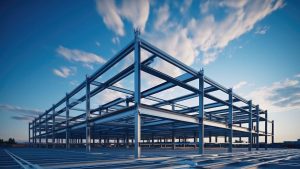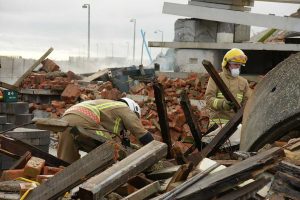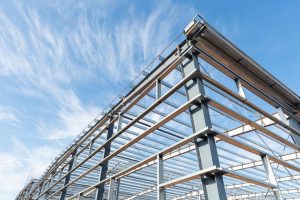In the expansive world of construction and architecture, the corrosion resistance of steel buildings stands as a significant concern, particularly in the UK. The nation’s unique climate poses distinct challenges to steel, making it imperative to understand and address these issues effectively.
What is Corrosion?
At its core, corrosion is the natural process wherein metal deteriorates due to environmental reactions, primarily with oxygen. Steel buildings can be affected by several types of corrosion, including galvanic, crevice, pitting, and uniform corrosion, each bringing unique challenges.
Why is Corrosion Resistance Important for Steel Buildings?
The importance of corrosion resistance lies primarily in three areas:
- Longevity and Durability: Ensuring a building stands the test of time is paramount. Resisting corrosion means fewer repairs and a longer lifespan.
- Safety: Corroded structures can compromise the safety of a building, potentially leading to catastrophic failures.
- Aesthetic and Maintenance Costs: Corroded buildings lose their aesthetic appeal, and the costs of frequent maintenance can be prohibitive.
Factors That Influence Corrosion in the UK
Several factors, unique to the UK, play a part in the corrosion of steel:
- Coastal Environments: Salt spray accelerates corrosion, posing challenges for coastal structures.
- Urban vs Rural Settings: Urban environments with higher pollution levels can intensify corrosion compared to rural settings.
- Rainfall Acidity: The UK’s occasional acid rains can hasten steel’s corrosion process.
- Temperature Fluctuations: The variable British weather means steel structures undergo frequent expansion and contraction, affecting their integrity.
Types of Corrosion-Resistant Steel
Several steel variants have been developed to combat corrosion:
- Weathering Steel: Known for its distinct rusty appearance, it forms a protective oxide layer when exposed to weather.
- Stainless Steel: Comprises of chromium, offering a shiny finish and remarkable resistance against corrosion.
- Galvanised Steel: Protected by a zinc coating, which sacrifices itself to prevent rust on the steel.
- Coated Steel: Modern protective coatings, such as epoxy, offer another layer of protection against environmental factors.
Best Practices in Design and Construction to Minimise Corrosion
- Site Assessment: A thorough evaluation of the site can highlight potential corrosion-causing factors.
- Design Features: Implementing sloped roofs and overhangs can prevent water accumulation.
- Material Selection: Based on the local environment, the appropriate corrosion-resistant steel should be chosen.
- Drainage Systems: Ensuring efficient water drainage can prevent long-term corrosion issues.
Modern Protective Coatings and Treatments
- Paints: Protective paints not only provide aesthetic appeal but also protect against corrosion.
- Hot-dip Galvanisation: Immersing steel in molten zinc provides it with a robust protective layer.
- Cathodic Protection: An electrochemical process that prevents steel from corroding.
- Emerging Technologies: Continuous research brings about innovative coatings with enhanced corrosion resistance.
Maintenance and Inspection: Key to Prolonged Corrosion Resistance
- Regular Inspection: Periodic checks can help spot early signs of corrosion.
- Maintenance Techniques: Addressing corrosion at its onset can prevent more significant problems later.
- Re-coatings: Applying fresh protective coatings can extend the life of the steel structure.
Corrosion resistance in steel buildings, especially in the context of the UK, is not just a technical matter—it’s about safety, aesthetics, and economic sense. As leaders in the industry, National Steel Buildings ensures that every construction project benefits from the best in corrosion-resistant technology, ensuring longevity and value for money.
We advocate for an informed approach to construction, and with our expertise, you can be confident in your choice of steel. We invite you to explore the difference that National Steel Buildings can make for your next project.




